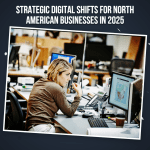A deep dive into why executives are re-prioritizing real-world gatherings for strategic visibility.
In an increasingly digital business landscape, the allure of virtual platforms like Zoom, Teams, and Meet remains strong. Efficiency, accessibility, and cost-savings are hard to ignore. Yet, as companies transition into a more hybrid future, a reevaluation is underway-one that challenges the assumption that digital-first is always best.
This shift is more than anecdotal. It’s strategic. In-person events, particularly those grounded in local engagement, are emerging as a critical layer in the modern executive playbook. The data supports it: surveys from leading event analytics firms show that 72% of C-level executives believe live, face-to-face interaction yields stronger long-term business outcomes than virtual alternatives.
The key differentiator is not merely presence, but context. Local events are immersive. They allow for situational awareness, emotional cues, spontaneous discussion, and unfiltered feedback. They create space for executives to test assumptions, observe market sentiment, and draw insights from real-time, unscripted conversation-something no webinar or screen-share can replicate.
Strategically, the return to in-person is not about nostalgia. It’s about depth. In-person events encourage a kind of intellectual agility and real-time decision-making that aligns with the increasingly complex, non-linear nature of B2B engagement. Whether it’s co-creating solutions with partners or solidifying deals through relationship equity, physical presence accelerates trust and closes distance, both literally and figuratively.
There’s also the matter of environmental signals-location, presentation, tone, and even timing. These qualitative variables affect outcomes in subtle but important ways. An executive breakfast in Toronto, a curated thought leadership roundtable in Chicago, or a peer-led panel in Austin provides different flavors of strategic exposure.
Equally relevant are informal in-person touchpoints-meetings that take place over coffee, lunch, or even during shared commutes to events. These casual but intentional settings lower formality while deepening human connection. A coffee shop conversation can yield clearer decisions than a tightly scheduled virtual meeting, precisely because it allows space for nuance and reflection.
Corporate events, whether internally driven or externally hosted, also play a renewed role. Beyond brand positioning, these gatherings support internal alignment, employee engagement, and leadership visibility. In a post-remote environment where workforces are more distributed, the opportunity to gather physically-at strategy offsites, town halls, or leadership summits-has become a powerful lever for cultural cohesion and morale.
From a sales and marketing perspective, local activations allow for targeted brand experiences. Companies can integrate experiential marketing with strategic networking, aligning message, audience, and execution with precision. Attendees walk away with more than just collateral-they walk away with a feeling, a connection, and often, a decision.
This is not to suggest that virtual should be discarded. Rather, its limitations must be acknowledged. A successful communication strategy in 2025 must be layered-tactical in its use of tools, and deliberate in its choice of environments. Online allows for scale. But local events offer intimacy, relevance, and a sense of intentionality that is difficult to fake.
Ultimately, we are rediscovering that business, at its highest levels, is still conducted between people-not screens. And those who show up, locally and with purpose, will likely find themselves ahead of the curve in trust, influence, and long-term opportunity.
Also Read: Crafting a Concise and Compelling Business Introduction









